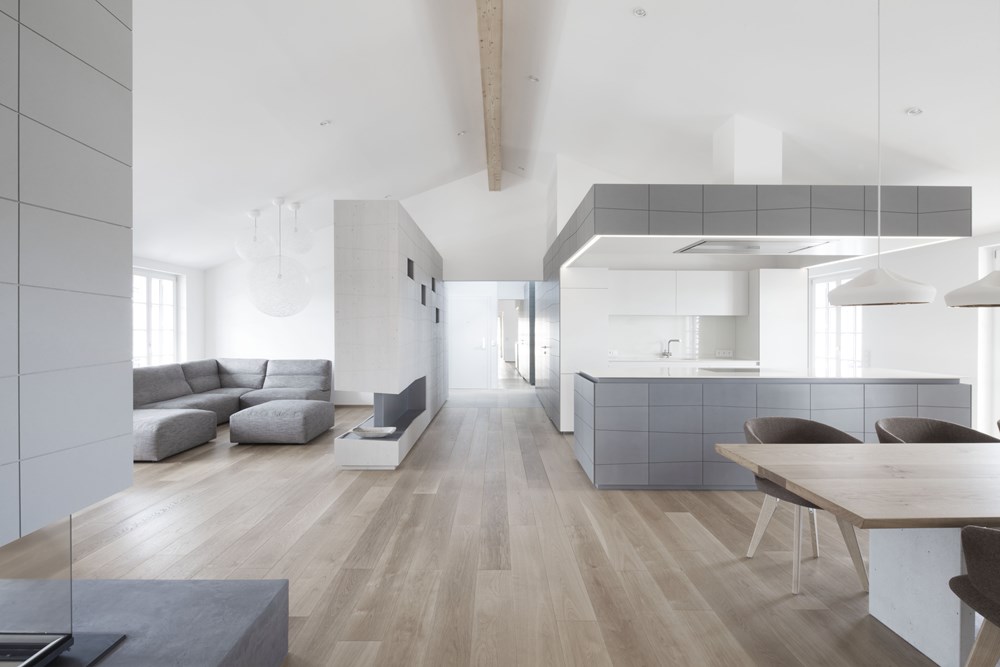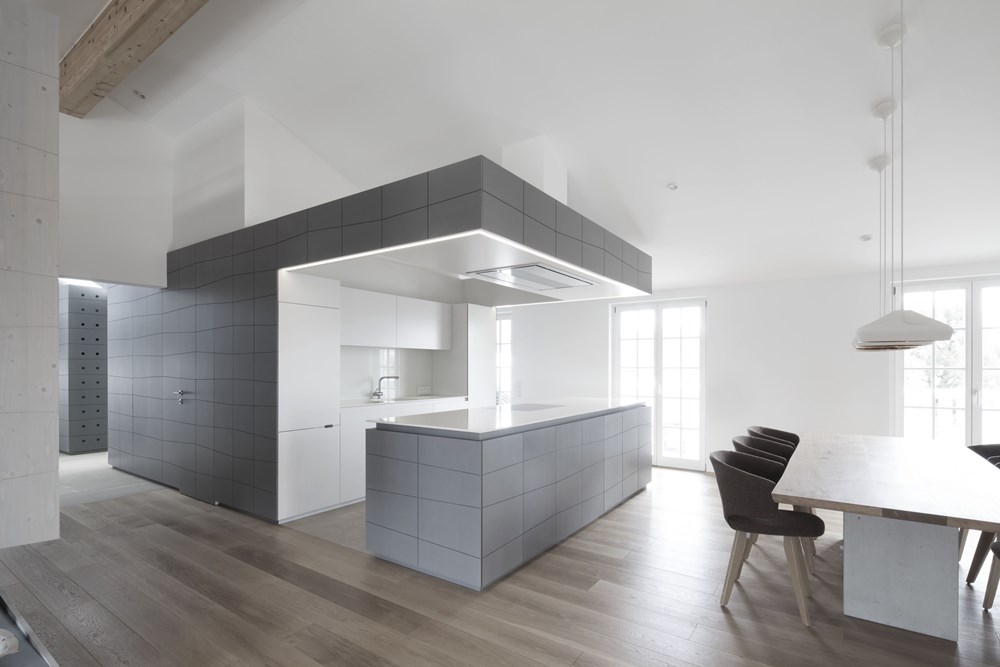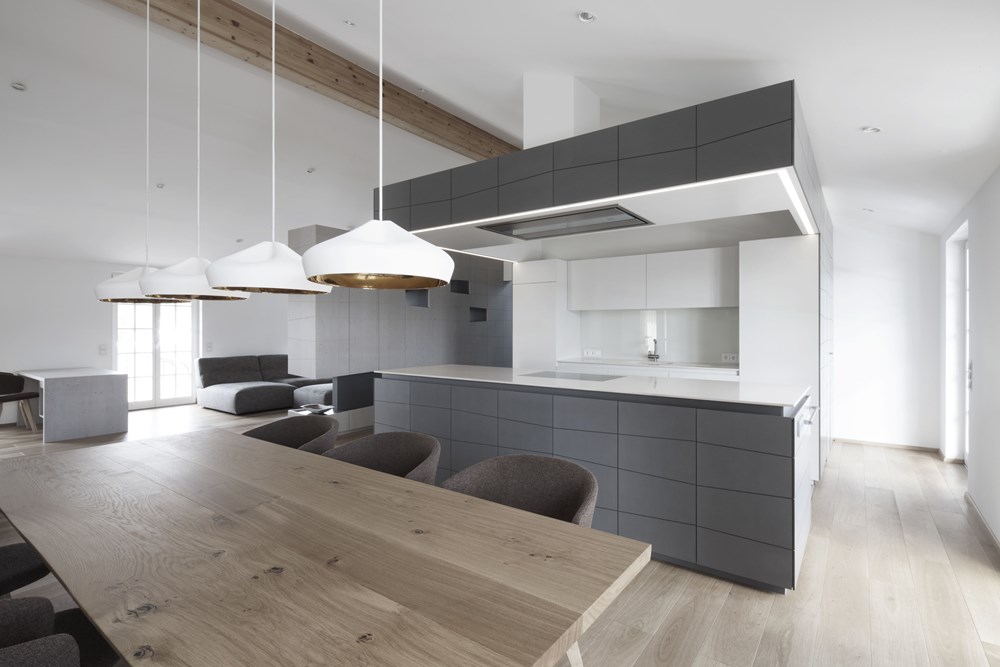This 250m2 Penthouse was designed by destilat has become the holiday home of a German business family of seven. Bright floors, cosy grey tones, and lavish white surface areas are the sound foundation of this apartment’s serene, harmonious atmosphere.
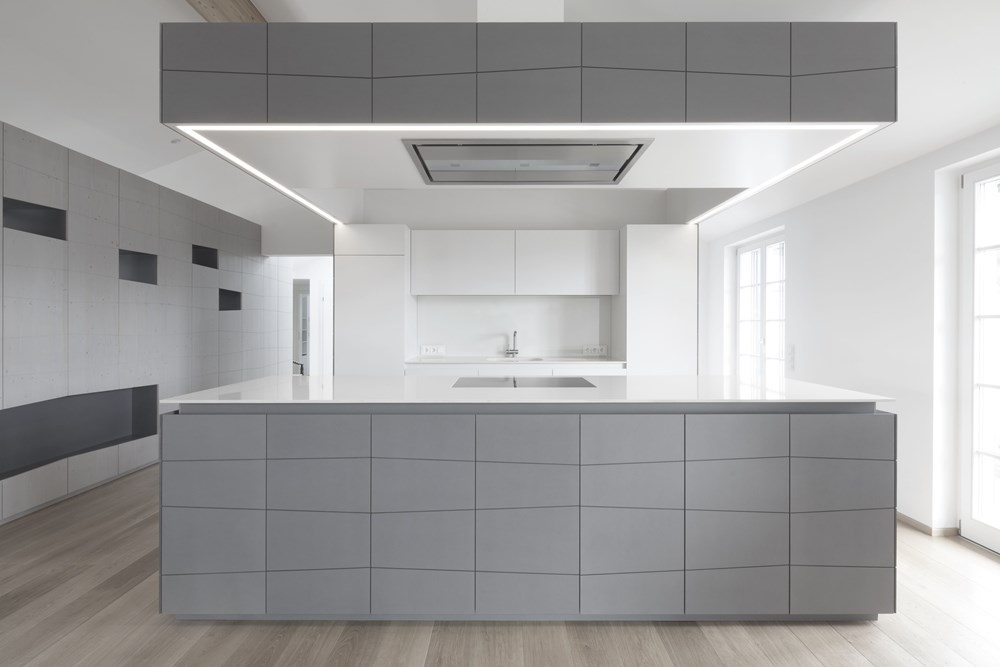
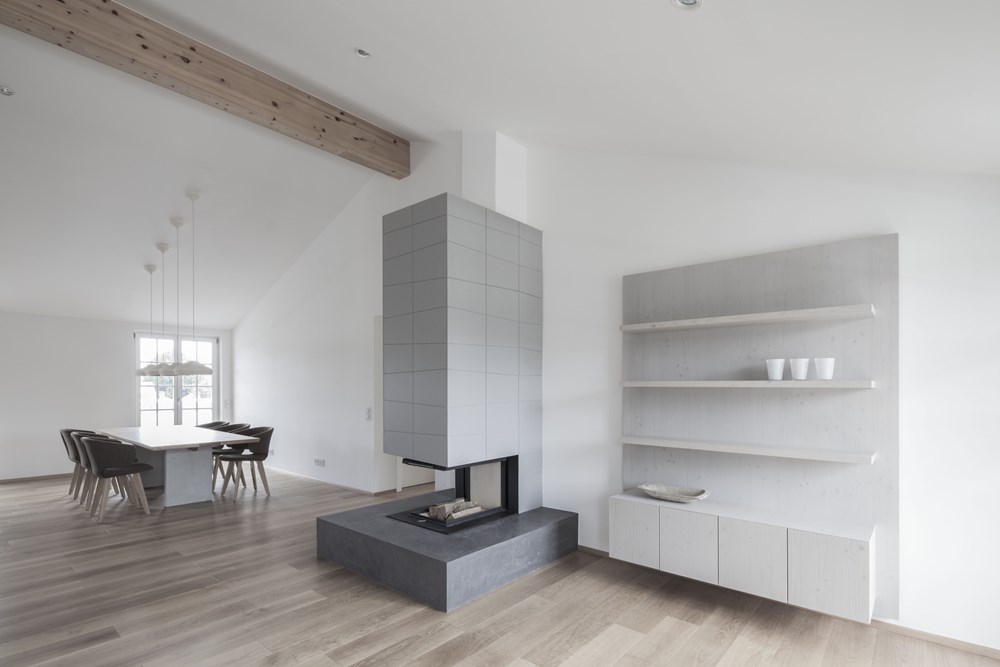
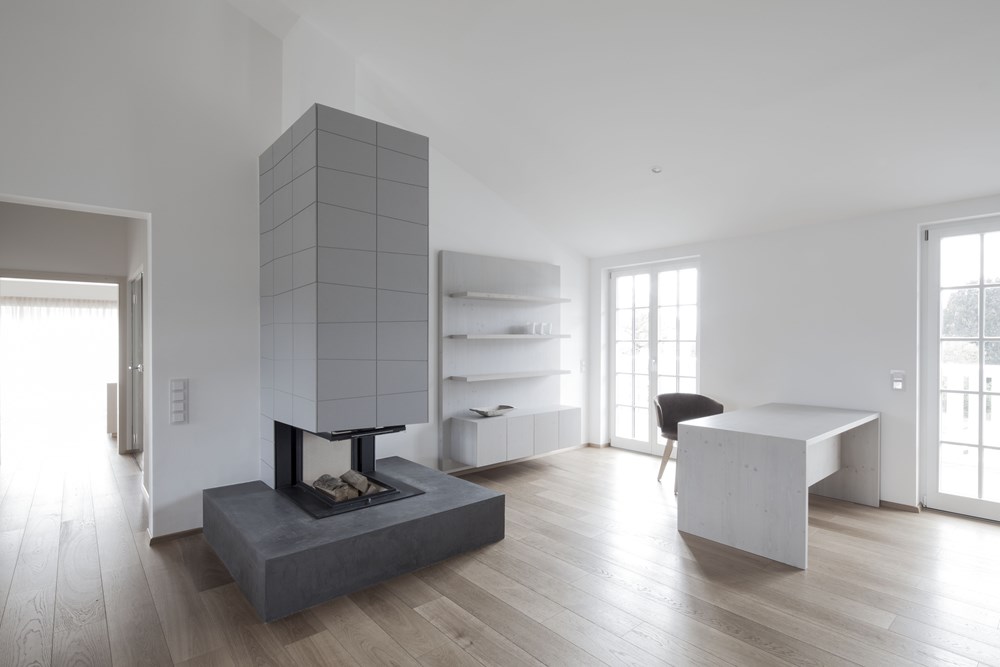
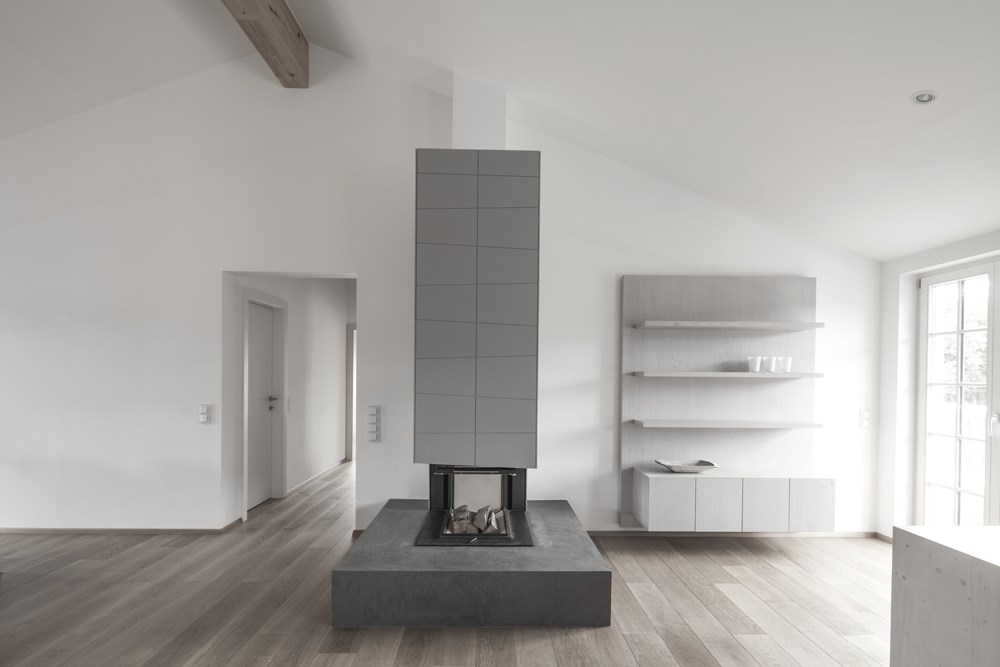
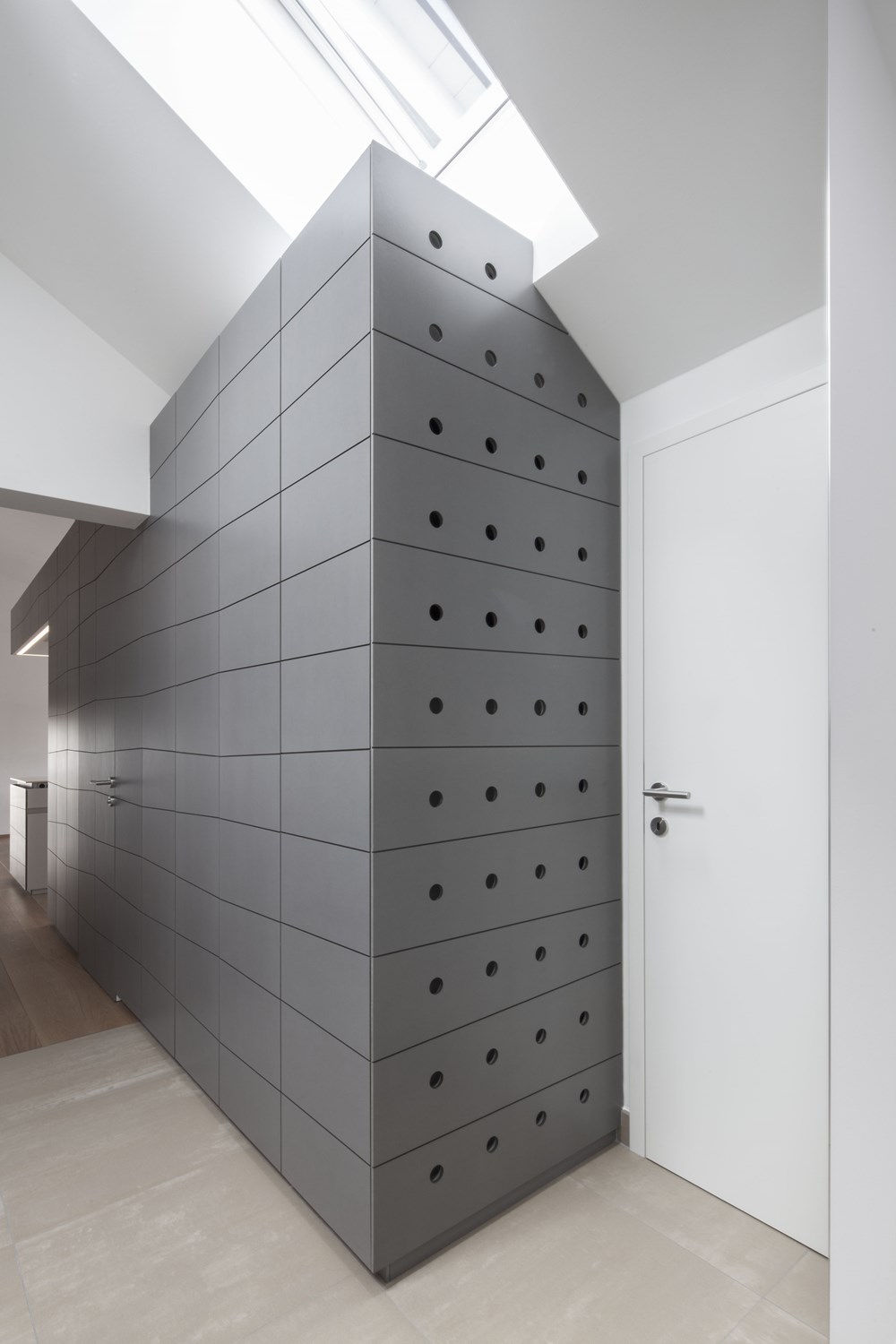

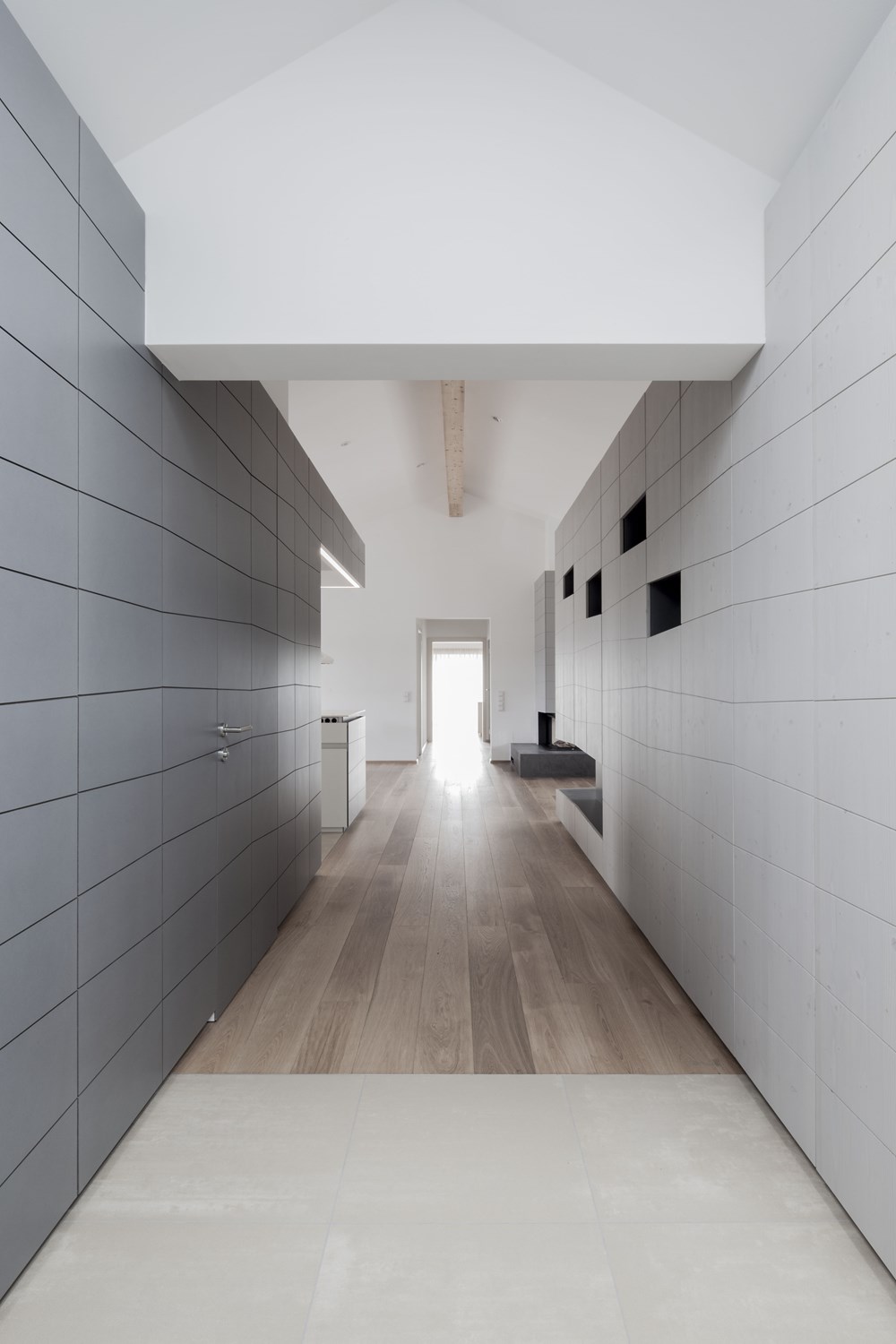
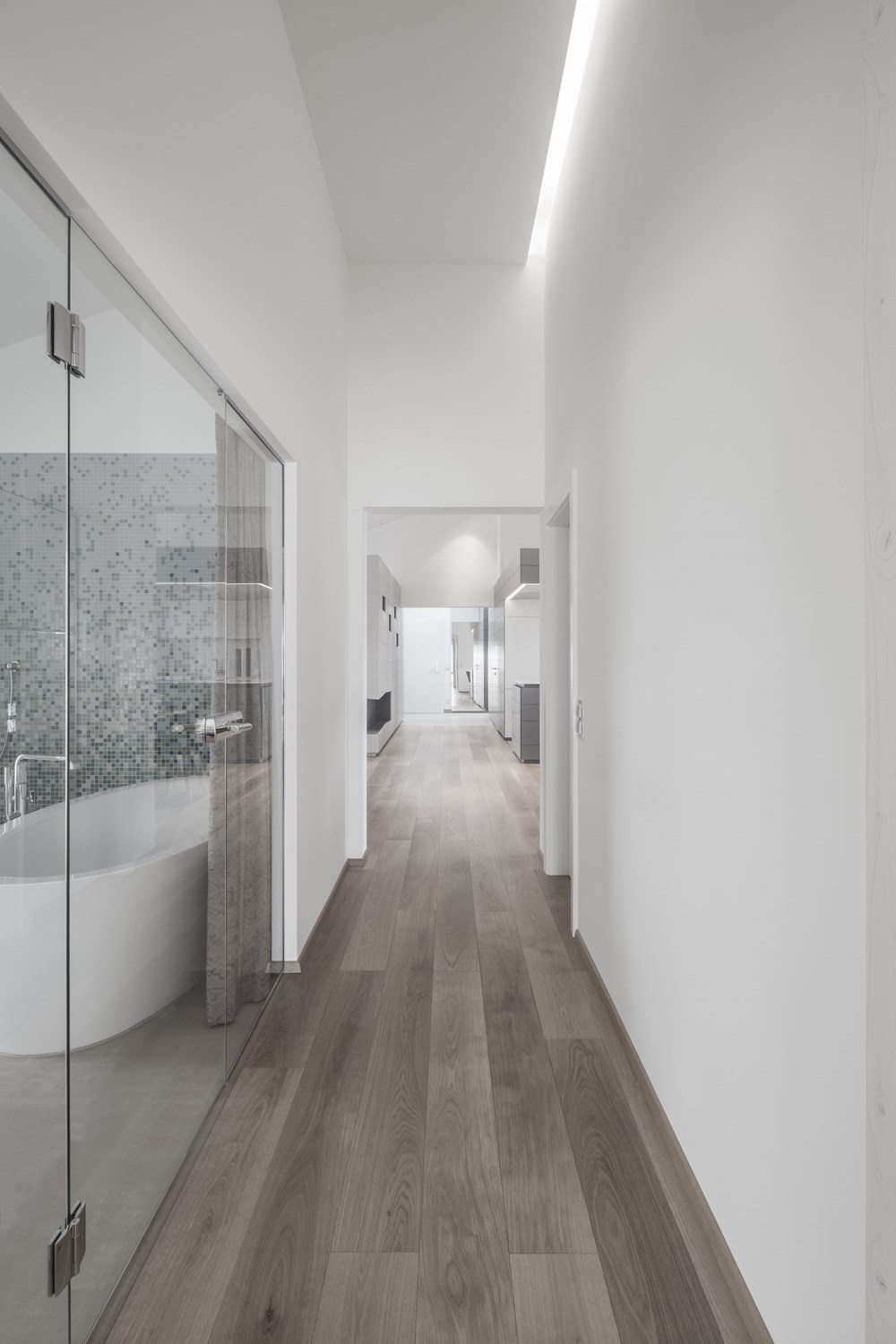
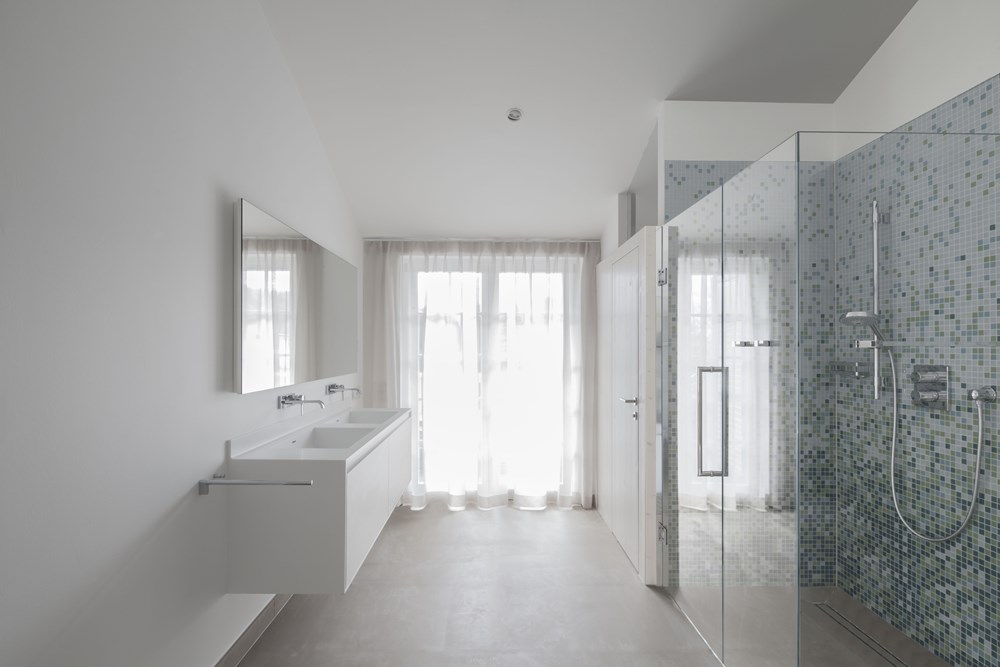
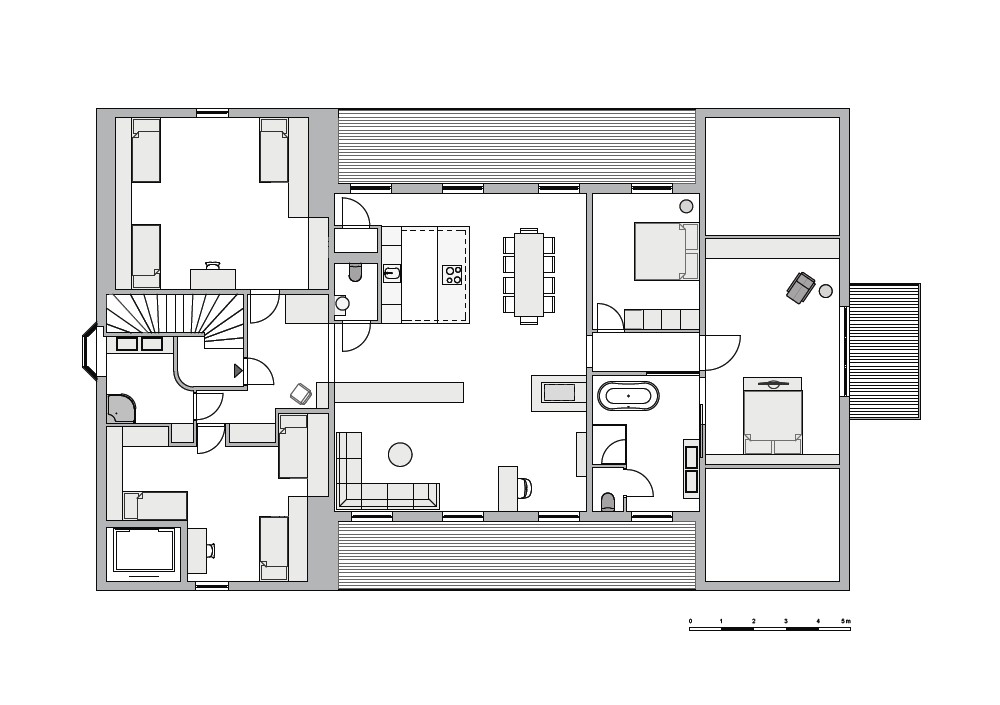
In the course of the revitalisation of the former Werzer cinema in Pörtschach, which was designed by the well-known “Wörthersee-Architect” Franz Baumgartner in 1930, parts of the roof truss were raised to make room for a spacious penthouse.
The centre of the apartment is a spacious living room with the so-called “camouflage kitchen”, which was also designed by destilat. The fronts of this kitchen are furnished with eternit panels. Its drawers have slightly slanted angles. This fresh design element becomes a welcome counterpoint to the relaxed atmosphere of the apartment. A lighting circle hovers above this central point of the living area and further highlights its atmospheric effect.
The kids’ comfortable bedrooms, a guest room and a master bedroom with an en-suite bathroom are grouped around a spacious, central living room.
One of this project’s central challenges was to highlight the big and up to six metres high main room in its entirety while creating a cosy and comfortable atmosphere at the same time.
But much effort was also put in the selection of other materials and furniture elements to ensure their practical and user-friendly properties meet the daily requirements of a big family – they have to be kid-friendly and therefore as durable as possible.
The design concept is inspired by structures, textures, and the dynamics of roofscapes. It also pays tribute to a specific feature of Austrian post-war architecture by incorporating milled eternit façade panels as furniture fronts far beyond the central kitchen area.
Photos by destilat
